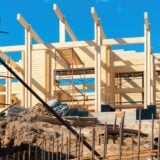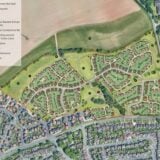House price growth in 2018 in the UK was the weakest it has been since 2013 while it was stronger in the rest of the UK, annual figures from the Land Registry shows.
In the UK as a whole property prices increased on an annual basis by 3.3% last year, down from 4.5% in 2017, 7% in 2016, 6% in 2015 and 8% in 2014, the slowest since it was 2.6% in 2013.
Year on year prices increased by 3% in England, down from 4.8% in 2017, 7.7% in 2016, 6.8% in 2015 and 8.3% in 2014, and was just above the 2.9% recorded in 2013.
In Scotland 2018’s annual growth of 4.6% was well above the 0.4% recorded in 2013, the 1.5% from 2016 and the 2.9% from 2017, but on par with the 4.7% annual rise in 2014 and the 4% seen in 2015.
Annual growth of 4.8% in Wales in 2018 was also well above the 0.4% from 2013 and the 2.8% from 2015, but more or less the same as the 5% from 2014, 4.2% in 2016 and 4.3% in 2017, showing the market has been consistent over the last three years.
The property market in Northern Ireland is much robust than it was in 2013. It saw annual price growth of 4.6% compared with a fall of 2.8% in 2013. But it has fallen back from a high of 7.7% in 2014, 7.3% in 2015 and 6.5% in 2016. But 2018 was above the 3.8% recorded in 2017.
A breakdown of the figures show that the North of England and the Midlands experienced a slight slowdown between 2017 and 2018, but this weakening growth was more evident in the South and East of England with house prices in London falling over the year in 2018.
A similar picture is observed when looking at the local authority level. Strong annual growth in the Forest of Dean, Newport and Torfaen is likely linked to the abolition of the Severn Bridge tolls, making it more affordable for those who work in Bristol to live on the opposite side of the River Severn.
In Scotland, strong growth in West Dunbartonshire may be due to the area’s direct trains to both Glasgow and Edinburgh.
London boroughs dominate the areas where prices fell over the year. The biggest fall in annual priced growth was in the City of London will a drip of 7.1%, followed by Hammersmith and Fulham down by 3.8%, Aberdeen down 3.5%, Wandsworth down 3.3% and Tower Hamlets down 3.1%.




